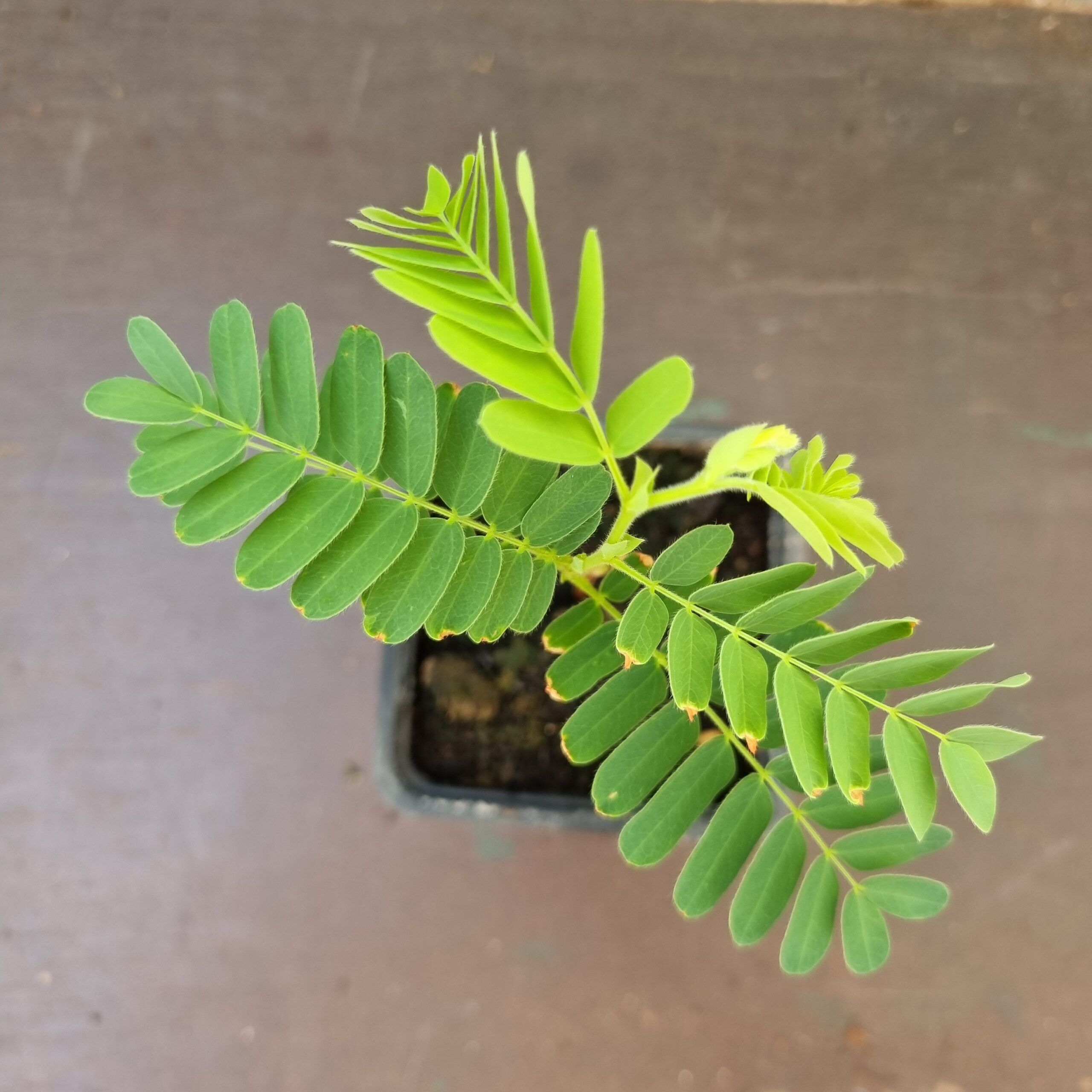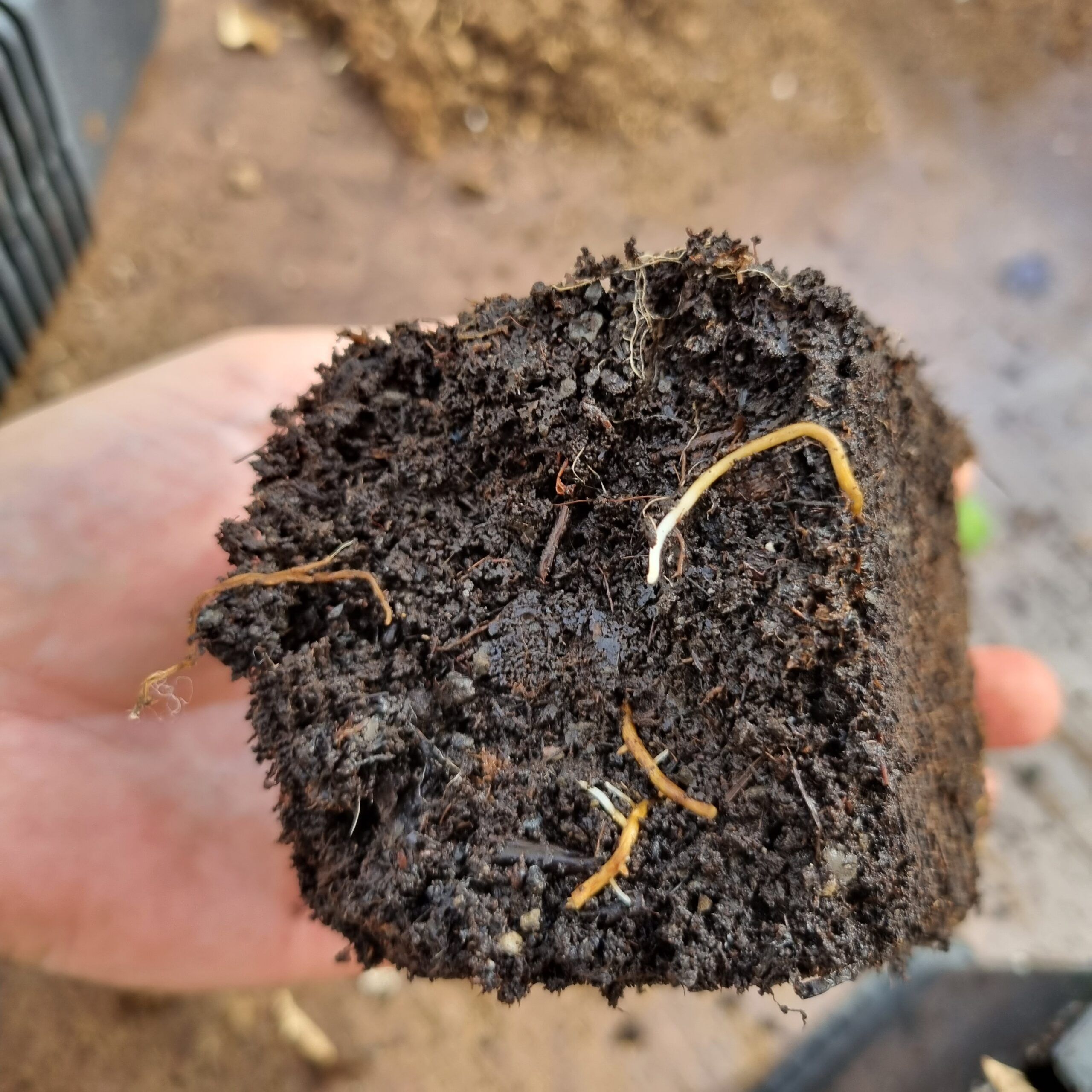Happy Tamarind tree – Tamarindus indica
€19.95
Out of stock
Email when stock available

Fast EU shipping

Grown in our own nursery
The tamarind tree (Tamarindus indica) is a leguminous tree bearing edible fruit that is probably indigenous to tropical Africa. Of all the fruit trees of the tropics, none is more widely distributed nor more appreciated as an ornamental than the tamarind tree.
Tamarind tree fruit
 The fruit is harvested by pulling the pod from its stalk. The fruit has a fleshy, juicy, acidic pulp. It is mature when the flesh is colored brown or reddish brown. The tamarinds of Asia have longer pods (containing six to 12 seeds), whereas African and West Indian varieties have shorter pods (containing one to six seeds).
The fruit is harvested by pulling the pod from its stalk. The fruit has a fleshy, juicy, acidic pulp. It is mature when the flesh is colored brown or reddish brown. The tamarinds of Asia have longer pods (containing six to 12 seeds), whereas African and West Indian varieties have shorter pods (containing one to six seeds).
This tree seedling is an Asian variety. The fruit is best described as sweet and sour in taste, and is high in tartaric acid, sugar, B vitamins, and, unusually for a fruit, calcium.
As the tamarind tree fruit matures it becomes sweeter and less sour (acidic) and the ripened fruit is considered more palatable. The sourness varies between cultivars and some sweet tamarind ones have almost no acidity when ripe. This tamarind tree seedling is a sweet variety.
In Western cuisine, tamarind pulp is found in Worcestershire Sauce and HP Sauce.
Tamarind paste has many culinary uses including a flavoring for chutneys, curries, and a traditional sharbat syrup drink. Tamarind sweet chutney is popular in India and Pakistan as a dressing for many snacks and often served with samosa.

Tamarind pulp is a key ingredient in flavoring curries and rice in south Indian cuisine, in the Chigali lollipop, in rasam, and in certain varieties of masala chai tea.
Across the Middle East, from the Levant to Iran, tamarind is used in savory dishes, notably meat-based stews, and often combined with dried fruits to achieve a sweet-sour tang.
In the Philippines, the whole fruit is used as an ingredient in the traditional dish called sinigang to add a unique sour taste, unlike that of dishes that use vinegar instead.
Indonesia also has a similarly sour, tamarind-based soup dish called sayur asem.
In Mexico and the Caribbean, the pulp from the fruit of the tamarind tree is diluted with water and sugared to make an agua fresca drink. It is widely used throughout all of México for candy making, including tamarind mixed with chilli powder candy.
Other applications
The leaves and bark of the tamarind tree are also edible, and the seeds can be cooked to make safe for consumption.
Tamarind seed oil is the oil made from the kernel of tamarind seeds.
Tamarind kernel powder is used as sizing material for textile and jute processing, and in the manufacture of industrial gums and adhesives. It is de-oiled to stabilize its colour and odor on storage.
Throughout Southeast Asia, the fruit of the tamarind tree is used as a poultice applied to the foreheads of people with fevers. The fruit exhibits laxative effects.
Tamarind tree lumber is used to make furniture, carvings, turned objects such as mortars and pestles, chopping blocks, and other small specialty wood items. Tamarind heartwood is reddish brown, sometimes with a purplish hue.
In homes and temples, especially in Buddhist Asian countries, the fruit pulp is used to polish brass shrine statues and lamps, and copper, brass, and bronze utensils.
Additional information
| Weight | 0.4 kg |
|---|---|
| Dimensions | 32 × 10 × 10 cm |
Properties & Care
How to take care of a tamarind tree
Like the curry leaf tree, the tamarind tree originates from a warm climate, and is not hardy in almost all parts of Europe. If you want to keep it the whole year round, it should serve as a house plant indoors when temperatures reach freezing point at night.
Only more mature trees can handle a few degrees below zero degrees Celsius.
It should receive plenty of sunlight. As soon as winter is over and there’s no more frost at night, the tree can be placed outside in a sunny spot.
This tree does very well in dry conditions, so it will not really need the use of a humidity tray when it’s inside the house in the winter.
Propagation
The seeds are somewhat flattened, and a glossy brown. The tamarind tree can be propagated through its seeds, teneer grafting, shield budding, and air layering.
FAQ
Questions and answers
- Do I need to re pot the tamarind tree when it arrives?
Answer: after a few weeks of acclimatization, you can re pot it to bigger pot during the growing season (May-September). - What soil do I use for my tamarind tree?
Answer: the tree tolerates a great diversity of soil types. You can use any regular good-quality potting mix. - Is fertilizer recommended?
Answer: they don’t need fertilizers to thrive, but when in growing season they will do better when fertilized. If you choose to use a fertilizer, we recommend that you use a liquid fertilizer. - Do I need to prune my tamarind tree?
If you keep it in a pot in the house, yes you will need to prune it to keep it do a manageable size. Only prune in growing season.
Shipping & Returns
Shipping
To ensure that it’s delivered in perfect condition, your tamarind tree will be shipped in custom plant mail-order cardboard packaging.
WARRANTY AND RETURNS
Despite the high quality of our products, it can occur that you receive a product that is not perfect. If that happens we’d like to provide you with a suitable solution as quickly as possible.
ALWAYS 2 YEARS WARRANTY
We are convinced of the quality of the products we offer. Therefore we always give 2 years guarantee on all your purchases.
14 DAY MONEY-BACK PERIOD
Curryelaftree.com operates a 14 day approval and inspection period for all online orders. This period starts when you have received the product. After 14 days the purchase agreement becomes final. During this period you should handle the product and packaging carefully, if reasonably possible. Try the product out to the extent necessary in order to decide whether you wish to keep it. The product can be vieuwd and reviewed, as you would do in a shop. When there is damage to the product or its packaging, this will be deducted from the return. When the product is used in this period, and now returned, the costs for use, such as cleaning or repair costs, will be deducted from the return. When you return a product within the 14 day money-back period, we are obliged to pay you the purchase price, including shipping and any debit or administration costs, back within 14 days from receiving your return.
DAMAGE UPON RECEIPT
All products are packaged safely and checked by Curryleaftree.com before shipping. If you nevertheless do receive a damaged product, please report the damage before returning the order.
RETURNS PROCEDURE
There are a number of reasons you may decide to return (a part of) your order. Read this information through carefully to avoid any misunderstandings and delays. If you wish to return a product, the method of shipment and the condition of the product must comply with our stated terms and conditions below.
Returns Form
For the return of a shipment contact us first. By filling in a form and sending it to us, you let us you know that you want to return your shipment. When we have received this form, we will start processing your return. You can always email us to discuss your return.
Return Shipment and Costs
The correct postal franking costs must always be paid for a return shipment. Packages not correctly franked or marked as returned subject to payment on delivery will not be accepted by us. Curryleaftree.com reimburses the postal costs after returning in case the return is a result of an mistake by Curryleaftree.com or when there is a defective product. If you are entitled to a refund of the shipping costs, we apply a maximum fee. You can also choose to bring the product back or exchange it at the Curryleaftree.com office. This is fast, easy and free of charge. The maximum fee for a return shipment is € 6,95 within the Netherlands, € 9,95 for Belgium and Germany, € 25.95 for the rest of Europe and € 29,00 for the rest of the world.
Return Address
Curryleaftree.com
Warranty and Returns
Tolweg 2W 3851 SK
Ermelo The Netherlands
1 review for Happy Tamarind tree – Tamarindus indica
Only logged in customers who have purchased this product may leave a review.








Anoniem (verified owner) –
Ik ben heel blij met de plant, maar zou graag nog een beetje uitleg krijgen over het verzorgen van de plant.